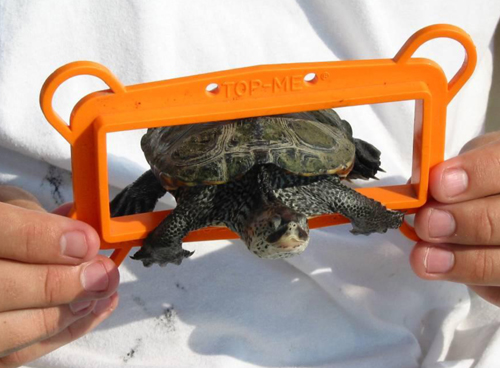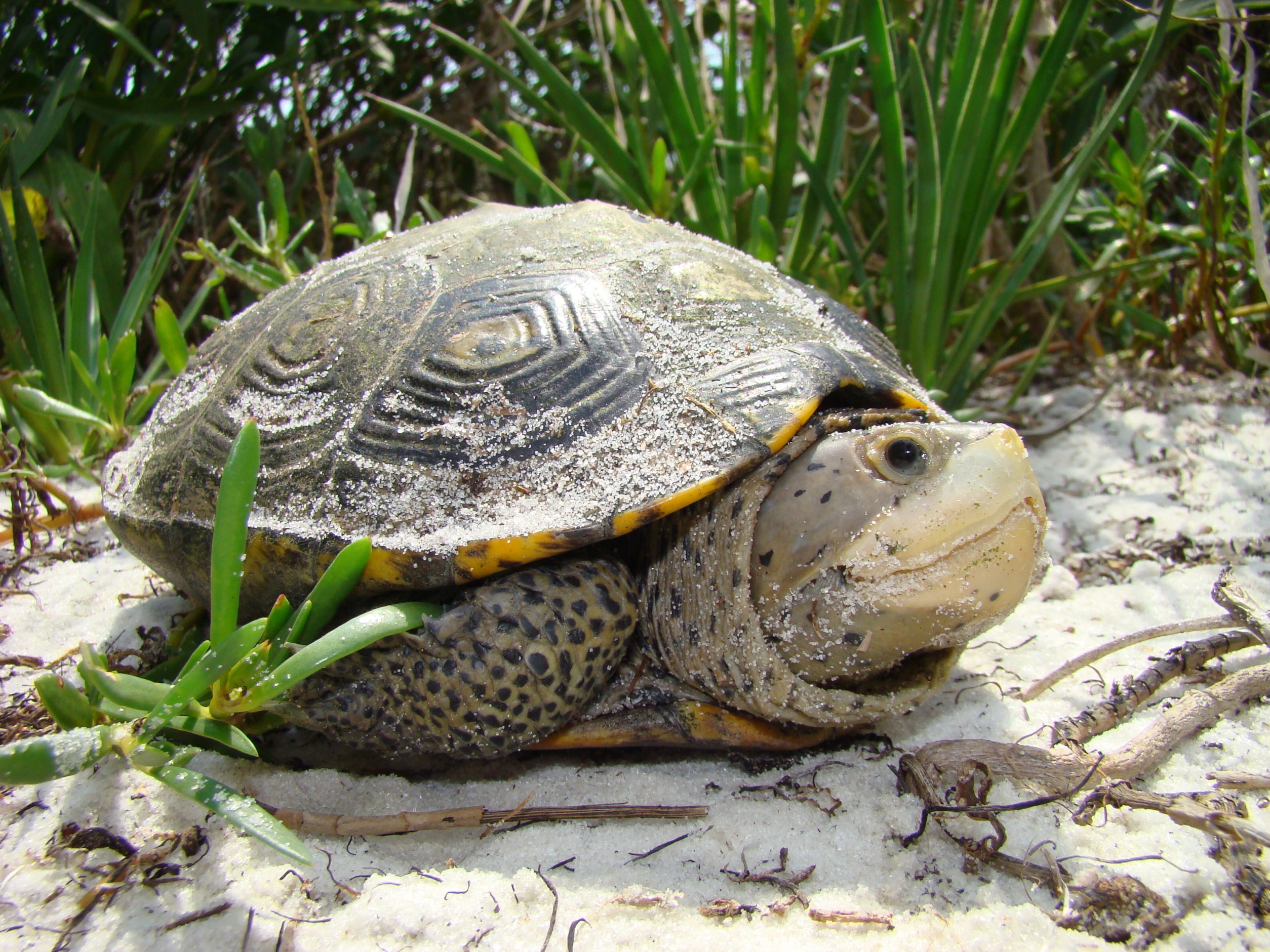
Nearly 18 months after three environmental groups petitioned the Florida Fish and Wildlife Conservation Commission (FWC) to require bycatch reduction devices (BRD) on crab traps to minimize their impact on diamondback terrapins, the commission has put a proposed rule on hold and asked its staff to conduct a study on their effectiveness. “It’s unlikely that there’s going to be something to act on until that work is done,” said Commissioner Michael W. Sole at the May 12, 2021 commission meeting.
“They’ve kicked the can down the road,” said George L. Heinrich, a field biologist and executive director of the Florida Turtle Conservation Trust. “That work has already been done.”
Heinrich and Joe Butler, a biology professor at the University of North Florida, spent four summers beginning in 1995 studying terrapin mortality in crab traps. They found that the inexpensive bycatch reduction devices prevented 73% of terrapins from entering crab traps, where they die in about several hours, with no significant impact on crab fisheries. Studies from across the terrapin’s range confirm these findings.
Without protecting terrapins now, they will likely need to be listed as threatened or endangered, adds Elise Bennett, an attorney with the Center for Biological Diversity (CBD) based out of St. Petersburg.

“It’s a shame that the commission didn’t put interim protections in place while it is doing the study,” she said. “Scientists sounded the alarm about crab traps more than 20 years ago – if terrapins continue to decline, and they need to be listed (as threatened or endangered) in the future, it will be an even bigger conservation burden for the state. At the very least, in the interim, the commission should promptly approve rules to end the collection and possession of terrapins and require BRDs on recreational crab traps.”
Locally, their plight is so dire that the Agency on Bay Management has requested that the Tampa Bay Regional Planning Council approve a resolution calling on the FWC to take immediate action rather than delaying action until the additional study is complete. “Tampa Bay is a major location and home for the diamondback terrapin,” said Barbara Sheen Todd, ABM chair. “We urge our partners to immediately develop a cooperative conservation initiative which will ensure the future and survival of this animal.”
Florida’s coastline represents 30% of their entire habitat range. Five of the seven subspecies of terrapins live in Florida, thus the state’s terrapin populations and habitats are critical to the conservation of the entire species.
Once so plentiful that terrapin stew was a common dish in coastal communities from Massachusetts to Texas, researchers can spend days in the field searching for terrapins without catching a glimpse of the diminutive creatures. Like all turtles, they’re threatened by habitat destruction, increased predation and sea-level rise. They’re the only turtles that live in brackish water, where blue crabs also are found.
Unlike crabs, which reproduce at about 18 months, female terrapins don’t reach sexual maturity until they are four to eight years old. “Every adult terrapin we lose to traps is a step toward reducing or even ending a population entirely,” Bennett said.
In the meantime, CBD and the Florida Turtle Conservation Trust aim to keep terrapins top of mind for the seven FWC commissioners who can direct the agency to require BRDs on commercial and recreational crab traps. “As many people as possible should reach out and let the commission know that terrapins can’t wait for protection. They need it now,” said Bennett.
Cover photo by George Heinrich
